"The stated goal of the UNFCCC – avoiding dangerous anthropogenic interference in the climate – is in fact unattainable, because today we are already experiencing dangerous anthropogenic interference."
— John P. Holdren, Distinguished Scientist Seminar, 3 Nov 2006 Meeting the Climate Change Challenge.
(Dr. Holdren is US Presidential Science Advisor, Professor of Environmental Policy at Harvard University, and Former President of the American Association for the Advancement of Science)
Even so, no one has submitted that this is the case to the United Nations climate negotiations. As a result, the negotiators are not under pressure to reach an agreement and the industrialized nations are not being held accountable under international law.
Dangerous interference with the climate system refers to atmospheric greenhouse gas concentrations. The distinction between dangerous interference and dangerous climate change is most important because of the basic science of greenhouse gases in the atmosphere and how planetary systems respond to atmospheric greenhouse gas warming.
The science of global climate change is characterized by long lag times between emissions of greenhouse gases and their impact being experienced by ecosystems, species and human populations on the planet. Put simply, the cause and effect relationship between atmospheric greenhouse gases and their global warming means that at any particular time and global average temperature increase, that particular temperature increase is bound to be doubled in the future and that the increased temperature and all global climate change impacts will last for over 1000 years.
RISK MANAGEMENT AND CLIMATE CHANGE by Howard Kunreuther et al. was published in Nature 2013. It is the latest we have published by the climate science.
The Bradford Hill risk criteria (9) remain a basis of toxicology to determine causation. Climate change assessments seek cause and effect rather than causation.
— John P. Holdren, Distinguished Scientist Seminar, 3 Nov 2006 Meeting the Climate Change Challenge.
(Dr. Holdren is US Presidential Science Advisor, Professor of Environmental Policy at Harvard University, and Former President of the American Association for the Advancement of Science)
Even so, no one has submitted that this is the case to the United Nations climate negotiations. As a result, the negotiators are not under pressure to reach an agreement and the industrialized nations are not being held accountable under international law.
Dangerous interference with the climate system refers to atmospheric greenhouse gas concentrations. The distinction between dangerous interference and dangerous climate change is most important because of the basic science of greenhouse gases in the atmosphere and how planetary systems respond to atmospheric greenhouse gas warming.
The science of global climate change is characterized by long lag times between emissions of greenhouse gases and their impact being experienced by ecosystems, species and human populations on the planet. Put simply, the cause and effect relationship between atmospheric greenhouse gases and their global warming means that at any particular time and global average temperature increase, that particular temperature increase is bound to be doubled in the future and that the increased temperature and all global climate change impacts will last for over 1000 years.
RISK MANAGEMENT AND CLIMATE CHANGE by Howard Kunreuther et al. was published in Nature 2013. It is the latest we have published by the climate science.
The Bradford Hill risk criteria (9) remain a basis of toxicology to determine causation. Climate change assessments seek cause and effect rather than causation.
Catastrophic dangers and impacts?
Yes, according to the IPCC.
While scientists in general seldom talk of catastrophic climate change, there is one section in the IPCC where the risk of catastrophes to the planet and to human populations are confirmed.
IPCC 4th Assessment 2007
2.2.4 Risk of catastrophic or abrupt change
http://www.ipcc.ch/publications_and_data/ar4/wg3/en/ch2s2-2-4.html
The possibility of abrupt climate change and/or abrupt changes in the earth system triggered by climate change, with potentially catastrophic consequences, cannot be ruled out (Meehl et al., 2007).
Disintegration of the West Antarctic Ice Sheet (See Meehl et al., 2007), if it occurred, could raise sea level by 4-6 metres over several centuries. A shutdown of the North Atlantic Thermohaline Circulation (See Meehl et al., 2007) could have far-reaching, adverse ecological and agricultural consequences. (See IPCC, 2007b, Chapter 17)
Increases in the frequency of droughts (Salinger, 2005) or a higher intensity of tropical cyclones (See Meehl et al., 2007) could occur. Positive feedback from warming may cause the release of carbon or methane from the terrestrial biosphere and oceans (See Meehl et al., 2007), which would add to the mitigation required.
http://www.ipcc.ch/publications_and_data/ar4/wg3/en/ch2s2-2-4.html
The possibility of abrupt climate change and/or abrupt changes in the earth system triggered by climate change, with potentially catastrophic consequences, cannot be ruled out (Meehl et al., 2007).
Disintegration of the West Antarctic Ice Sheet (See Meehl et al., 2007), if it occurred, could raise sea level by 4-6 metres over several centuries. A shutdown of the North Atlantic Thermohaline Circulation (See Meehl et al., 2007) could have far-reaching, adverse ecological and agricultural consequences. (See IPCC, 2007b, Chapter 17)
Increases in the frequency of droughts (Salinger, 2005) or a higher intensity of tropical cyclones (See Meehl et al., 2007) could occur. Positive feedback from warming may cause the release of carbon or methane from the terrestrial biosphere and oceans (See Meehl et al., 2007), which would add to the mitigation required.
Irreversibility and the implications of decision-making
http://www.ipcc.ch/publications_and_data/ar4/wg3/en/ch2s2-2-3.html
Human impacts on the climate system through greenhouse gas emissions may change the climate so much that it is impossible to return it to its original state – in this sense the changes are irreversible (Scheffer et al., 2001; Schneider, 2004). Some irreversibility will almost certainly occur.
http://www.ipcc.ch/publications_and_data/ar4/wg3/en/ch2s2-2-3.html
Human impacts on the climate system through greenhouse gas emissions may change the climate so much that it is impossible to return it to its original state – in this sense the changes are irreversible (Scheffer et al., 2001; Schneider, 2004). Some irreversibility will almost certainly occur.
Risks
Dangerous Denial
Incredibly no nation, no scientific organization has put forward a public position, made a submission or presented a formal statement, in support of John Holdren's 2006 conclusion in his lectures that the world is beyond dangerous interference with the climate system, under the clear intention and terms of the 1992 UN Framework Convention on Climate Change.
The climate scientists, with just a few notable exceptions, have a long-standing and firm policy that they will not make a statement defining what dangerous climate interference is nor make statements or recommendations on the state of climate safety or danger. The reason that they give is that dangerous climate interference is a value judgment and scientists cannot make value judgments. The scientists say that only the "policymakers" (in the case of the IPCC scientists) or only "society as a whole" (in the case of the 2007 Copenhagen Climate Science Congress) can make such statements.
The fact is that the government bureaucrats who sit on the IPCC have no climate science qualifications whatsoever and are in no position to make such recommendations to their governments.
Incredibly no nation, no scientific organization has put forward a public position, made a submission or presented a formal statement, in support of John Holdren's 2006 conclusion in his lectures that the world is beyond dangerous interference with the climate system, under the clear intention and terms of the 1992 UN Framework Convention on Climate Change.
The climate scientists, with just a few notable exceptions, have a long-standing and firm policy that they will not make a statement defining what dangerous climate interference is nor make statements or recommendations on the state of climate safety or danger. The reason that they give is that dangerous climate interference is a value judgment and scientists cannot make value judgments. The scientists say that only the "policymakers" (in the case of the IPCC scientists) or only "society as a whole" (in the case of the 2007 Copenhagen Climate Science Congress) can make such statements.
The fact is that the government bureaucrats who sit on the IPCC have no climate science qualifications whatsoever and are in no position to make such recommendations to their governments.

Environmental health risk
Global climate change is the greatest ever environmental
health risk. Like other very dangerous environmental health
risks the problem is POLLUTION, and over the past decades
we have developed sophisticated and reliable methods to
assess environmental risks for human population health
protection.
In the case of an injury, sometimes an emergency situation is
obvious, and often only a careful examination looking for
signs of a worst case outcome reveals an emergency response
situation. The same applies to an environmental health threat.
The impacts of allowing global climate change to continue have
been known for decades.
Pollution. The issue is one of pollution - sources of atmospheric
greenhouse gas pollution which is the worst ever environmental
health hazard. We have had many decades of experience in
assessing risks of pollution.
However climate change assessments do not use a
pollution risk assessment approach.
A best guide we have is the 2010 A Human Health
Perspective on Climate Change published by Environmental
Health Perspectives and the National Institute of
Environmental Health Sciences. The flow chart opposite from
the publication shows the many more essential aspects and
connections of a proper environmental risk assessment that the
climate change assessments.
The other essential aspect that all the environmental health
science agrees with is the involvement at the start of public
stakeholders.
The 2007 IPCC AR4 assessment showed clearly from all the
impacts on billions of people and on future generations that
2C is disastrous (as James Hansen has said) and that for
vulnerable populations 1C is the danger limit.
The impacts shown are for 2100. To prevent future impacts the full
equilibrium warming must be used, which is much higher that
the transient warming. To prevent a future 4C warming happening,
warming by 2100 must be limited to about 2.5C. This is not
acknowledged in the assessments
The IPCC AR5 presents risk as the IPCC Reasons for Concern, but these
are in fact the severity risk of impacts projected to happen at the
matching temperature increases (Joel Smith text).
They are also transient temperature increases, so the
real risk is far worse than it appears as presented in the AR5.
Risks in government decision making rely on economic costs
benefit assessment, but the economics applied is notorious for
ignoring socio-environmental costs.
In June 2014 The first attempt at a USA climate change Risky Business was released.
The first thing to come remotely close to attempting a climate change risk assessment was the 2006 UK Stern Commission's Economics of Climate Change. In this case the economic risk assessment took into account the potential of increasing socio-environmental damages if GHG emissions were allowed to continue. In 2014 Nicolas Stern co-authored an economics paper finding that all economic climate change assessments had grossly underestimated the future costs of global climate change.
Climate change will lead to changes in geophysical, biological and socio-economic systems. An impact describes a specific change in a system caused by its exposure to climate change. Impacts may be judged to be harmful or beneficial.Vulnerability to climate change is the degree to which these systems are susceptible to, and unable to cope with, adverse impacts. The concept of risk,which combines the magnitude of the impact with the probability of its occurrence, captures uncertainty in the underlying processes of climate change, exposure, impacts and adaptation.
IPCC 2007
Though the definition Risk = Probability X Magnitude is recommended by the IPCC, the IPCC only provides model projected probabilities. Risk is left up to policy makers to apply.
In the case of environmental health impacts on populations a third aspect for the risk formula applies, which is Vulnerability The IPCC does provide information on vulnerability and the reasons have been well known for a long time. High vulnerability will increase the magnitude of the impact.
Climate Change Risk = Probability x Magnitude x Vulnerability
The IPCC does not determine risk or even danger.
The IPCC does not determine risks and does not define what would constitute dangerous interference with the climate system. The IPCC says that defining the dangerous climate change is a value judgment that only the policymakers can make.
(The website Steven Schneider (late) long time lead author of the IPCC)
health risk. Like other very dangerous environmental health
risks the problem is POLLUTION, and over the past decades
we have developed sophisticated and reliable methods to
assess environmental risks for human population health
protection.
In the case of an injury, sometimes an emergency situation is
obvious, and often only a careful examination looking for
signs of a worst case outcome reveals an emergency response
situation. The same applies to an environmental health threat.
The impacts of allowing global climate change to continue have
been known for decades.
Pollution. The issue is one of pollution - sources of atmospheric
greenhouse gas pollution which is the worst ever environmental
health hazard. We have had many decades of experience in
assessing risks of pollution.
However climate change assessments do not use a
pollution risk assessment approach.
A best guide we have is the 2010 A Human Health
Perspective on Climate Change published by Environmental
Health Perspectives and the National Institute of
Environmental Health Sciences. The flow chart opposite from
the publication shows the many more essential aspects and
connections of a proper environmental risk assessment that the
climate change assessments.
The other essential aspect that all the environmental health
science agrees with is the involvement at the start of public
stakeholders.
The 2007 IPCC AR4 assessment showed clearly from all the
impacts on billions of people and on future generations that
2C is disastrous (as James Hansen has said) and that for
vulnerable populations 1C is the danger limit.
The impacts shown are for 2100. To prevent future impacts the full
equilibrium warming must be used, which is much higher that
the transient warming. To prevent a future 4C warming happening,
warming by 2100 must be limited to about 2.5C. This is not
acknowledged in the assessments
The IPCC AR5 presents risk as the IPCC Reasons for Concern, but these
are in fact the severity risk of impacts projected to happen at the
matching temperature increases (Joel Smith text).
They are also transient temperature increases, so the
real risk is far worse than it appears as presented in the AR5.
Risks in government decision making rely on economic costs
benefit assessment, but the economics applied is notorious for
ignoring socio-environmental costs.
In June 2014 The first attempt at a USA climate change Risky Business was released.
The first thing to come remotely close to attempting a climate change risk assessment was the 2006 UK Stern Commission's Economics of Climate Change. In this case the economic risk assessment took into account the potential of increasing socio-environmental damages if GHG emissions were allowed to continue. In 2014 Nicolas Stern co-authored an economics paper finding that all economic climate change assessments had grossly underestimated the future costs of global climate change.
Climate change will lead to changes in geophysical, biological and socio-economic systems. An impact describes a specific change in a system caused by its exposure to climate change. Impacts may be judged to be harmful or beneficial.Vulnerability to climate change is the degree to which these systems are susceptible to, and unable to cope with, adverse impacts. The concept of risk,which combines the magnitude of the impact with the probability of its occurrence, captures uncertainty in the underlying processes of climate change, exposure, impacts and adaptation.
IPCC 2007
Though the definition Risk = Probability X Magnitude is recommended by the IPCC, the IPCC only provides model projected probabilities. Risk is left up to policy makers to apply.
In the case of environmental health impacts on populations a third aspect for the risk formula applies, which is Vulnerability The IPCC does provide information on vulnerability and the reasons have been well known for a long time. High vulnerability will increase the magnitude of the impact.
Climate Change Risk = Probability x Magnitude x Vulnerability
The IPCC does not determine risk or even danger.
The IPCC does not determine risks and does not define what would constitute dangerous interference with the climate system. The IPCC says that defining the dangerous climate change is a value judgment that only the policymakers can make.
(The website Steven Schneider (late) long time lead author of the IPCC)
UNFCCC Secretariat 2009
Impacts A question of degree

CLIMATE EMERGENCY INSTITUTE
The Health and Human Rights Approach to Climate Change
The Health and Human Rights Approach to Climate Change
VIDEO Understanding Risk
from Risky Business US June 2014
from Risky Business US June 2014
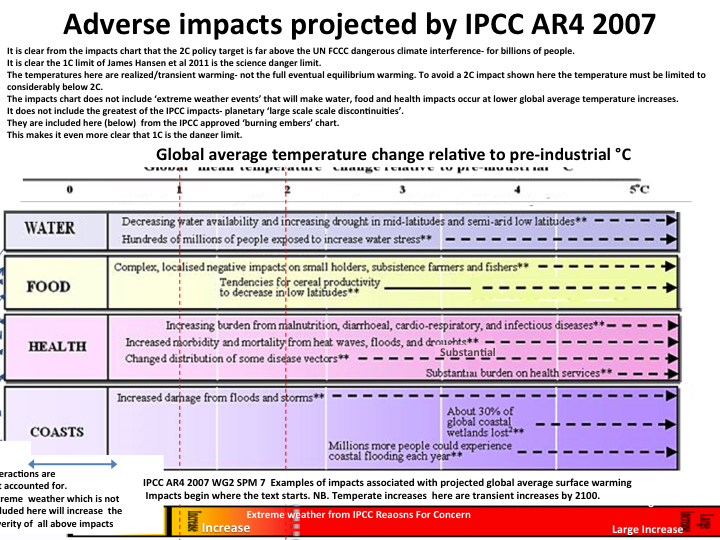


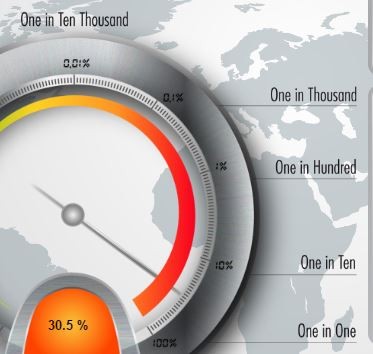
Global Climate Risk Indicator interactive
2009 US EPA
Endangerment and Cause or Contribute
Findings for Greenhouse Gases
Endangerment and Cause or Contribute
Findings for Greenhouse Gases
2013 US EPA
Moving Forward with Incorporating “Catastrophic” Climate Change into Policy Analysis
Moving Forward with Incorporating “Catastrophic” Climate Change into Policy Analysis
Human health and adaptation: understanding climate impacts on health and opportunities for action
Synthesis paper by the secretariat 2017
Synthesis paper by the secretariat 2017
The risk of climate ruin
March 2016
Centre for Climate Change Economics and Policy
March 2016
Centre for Climate Change Economics and Policy
Climate Change Risk Assessment
2015 UK workshop
2015 UK workshop
National Academies 2016
Characterizing Risk in Climate Change Assessments
Proceedings of a Workshop
Characterizing Risk in Climate Change Assessments
Proceedings of a Workshop
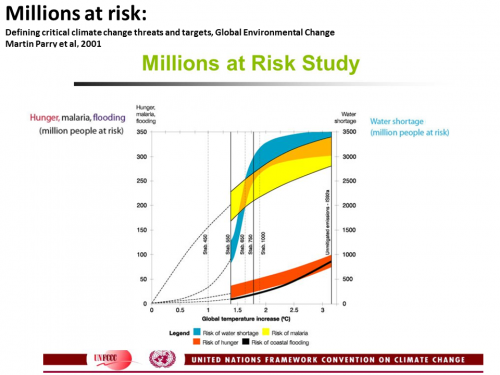
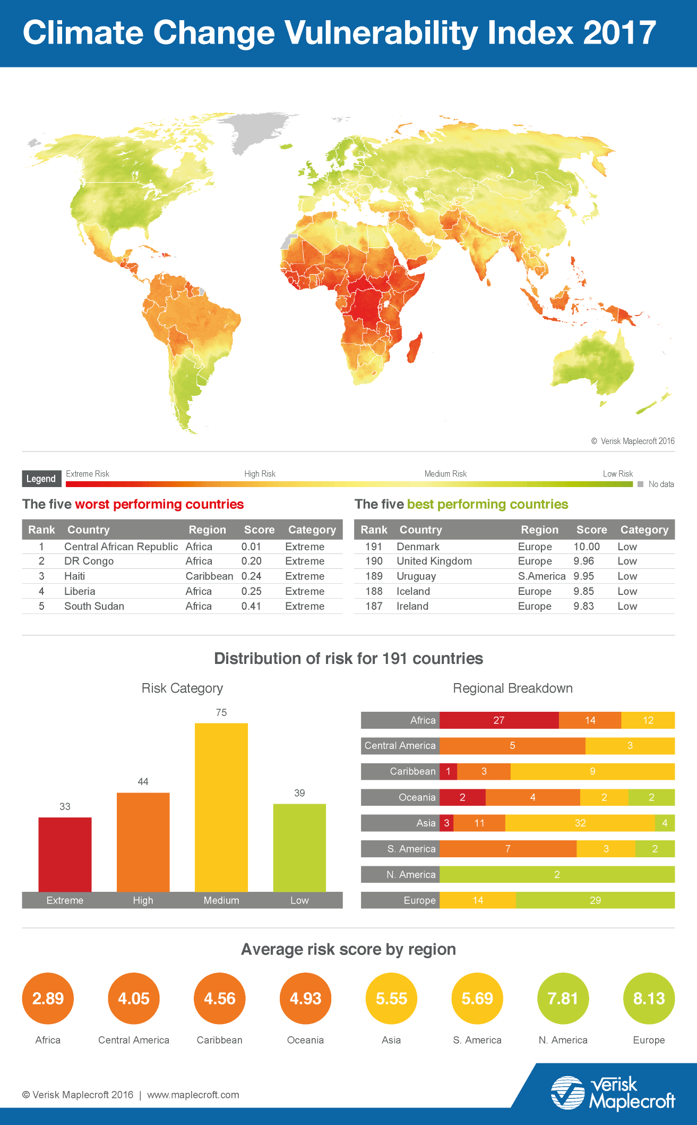
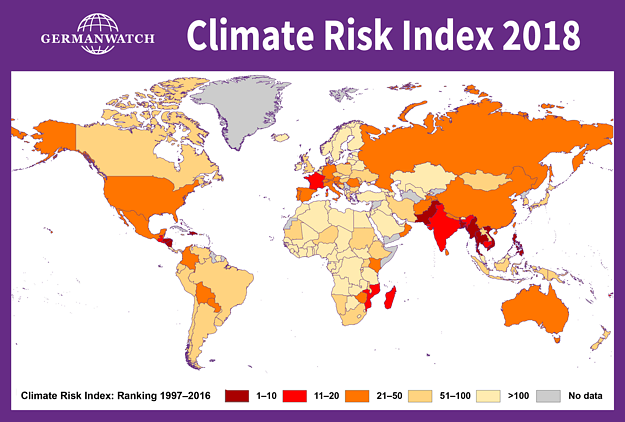
2016 EPA Climate indicators (global & USA)